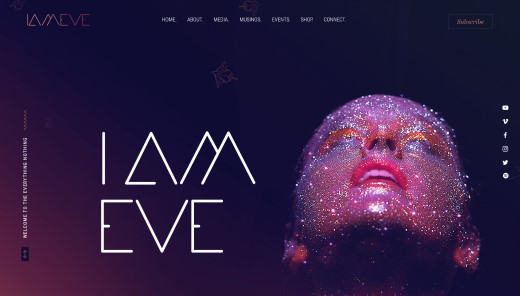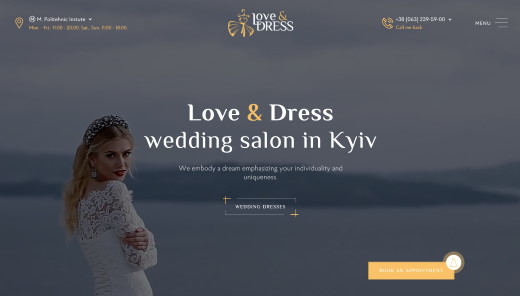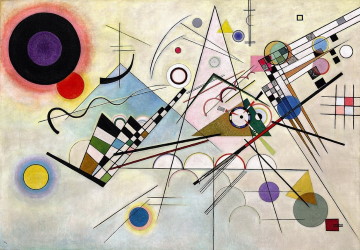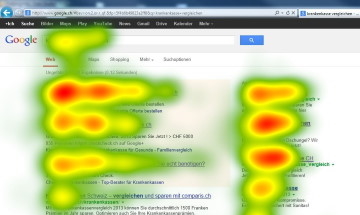Psychology Driven UX/UI/Web Design
In this online course, you'll learn to create impactful websites and apps that appeal simultaneously to the intellect, emotions and subconscious of users.
We offer rock bottom prices and 30 days money back guarantee at Udemy.
This course is for:
- Web designers at all levels
- App designers at all levels
- User experience designers at all levels
- User interface designers at all levels
- Web content creators
- Bloggers
- Social media publishers
- Online shop owners
When you finish this course you will be able to:
- Design effective and affective websites and apps by focusing on user psychology.
- Use recent findings in neuroscience and applied psychology when creating online content.
- Consider the instinctive, emotional and rational manifestations of the human mind when publishing on the web.
- Use subtleties of human cognition for designing balanced and aesthetically pleasing websites.
- Use gestalt and visual design principles to build strong visual hierarchies that guide users to their goals.
- Use color with greater psychological impact in web and app design.
- Design for mobile environments and contexts.
- Create content that is suitable for scanning, better readable, more impactful and shared more.
- Select, stylize and optimize visuals and multimedia for inspirational use on web pages.
- Use typography and iconic representations with greater psychological impact in web design.
- Design e-commerce websites and customer experiences that convert much better.
- Improve usability of controls and design better user interactions by understanding limitations of human beings.
- Conceive personalized user experiences by learning to design for different psychological profiles of individuals.
- Use gamification to create more engaging websites.
The course booklet describes the details of each topic discussed in the lectures.
This course includes:
- 39 hours on-demand video
- 100 downloadable resources
- Full lifetime access
- Access on mobile and TV
- Certificate of completion
Watch the Introduction Lecture
You can preview many more lectures at our YouTube Channel.
Trust experience!
Your instructor for this course has an engineering degree from the Swiss Institute of Technology, 32 years of international experience in design, working for some of the most prestigious corporations in the world, has designed over 80 professional level websites since 2000, and has received diverse levels of certification in psychology, neuroscience, artificial intelligence, robotics and a number of programming and scripting languages including HTML, CSS, PHP, MySQL, JavaScript, Java, Python, C, C++. In his private life, he is a keen student of mindfulness meditation, symbolism and esotericism.
This course is for you!
There are over 250 million regularly updated websites on the internet, that look, in one way or another, similar. How can yours stand out in this crowded place? How can you make sure that your first-time visitors have an engaging user experience and come again? And when they do, quickly find what they’re looking for to accomplish their goals? Can you change their mood to the better and use that positivity to achieve your website goals? Or anticipate their unconscious desires and cater to them?


This course will enable you to create effective and affective websites that are centered around how human beings work. By teaching you how to take findings in applied psychology into account when designing, it will empower you to predict how people will interact with your website and to take their perceptual biases, motivations, emotional states, and unconscious cognitions into consideration.
Only when you thoroughly understand the human mind can you hope to create designs that are simple yet pleasing and engaging at the same time. Psychology driven design aims to help accomplish that, by making you aware, at every step of a creative process, how humans think, feel and act. And the result of it is a product that appeals simultaneously to the intellect, emotions as well as unconscious desires of users.


Some people refer to this method as “designing for the mind” others as “designing for humans” or even “neurodesign”. We prefer the term “psychology driven design”, because the concept relies on findings in cognitive, behavioral and social psychology to determine, how, for example, the structure of a website influences users’ perception of it; how the colors and types used by its designer affect their mood; and how they interact with it to connect with others.
The psychological impact of the design of a website determines if users will trust it or not, if they will feel important, or at ease, or curious and so on. In short, it is the number one determinant of a good or bad web user experience, and regardless of whether you are new to web design or a seasoned professional, if you would like to understand how you can use its power, then this is the right course for you.

This course is for you!
This course is useful for all user experience, user interface, and web designers, to a great extent also app designers, independent of their level of expertise and years of experience, from individuals who are using readymade templates to publish their first personal conceptions, to highly professional designers who are creating original web interfaces for Fortune 500 companies. This course is very useful even for those content creators, who are not versed in web design at all, but wish to insert some content into an existing web-based platform in an impactful manner.
The course is especially beneficial for those who want to accomplish the creative part of designing a website, to then have a web developer do the coding; for those who use ready-made web templates that can be modified by users to quickly personalize them; and of course, for those who are already proficient in developing websites but who can use deeper design knowledge to make their creations more effective. If you are in this last category, this course can give you sound reasons for much of what is felt intuitively, and yet not fully understood.
This course will benefit you!
Website elements have become more or less standardized, so that by combining them within some context you can quickly end up with a fairly good-looking website. But the problem is, content and design are interrelated. Websites that are based on off-the-shelf themes by themselves cannot claim the kind of relationship that makes a website impactful, as a theme is always built on dummy content. This means that, in order to select content appropriate layouts, visuals, colors, typography etc., to create content that is scannable and shared more, to design user experiences that are gamified and personalized, you have to master the way to influence the perception of your visitors, whether you design from scratch or use a template.
In that sense, learning about psychology driven web design will enable you to:
- Understand why successful websites have been designed the way they have been;
- Evaluate why, in some context, a certain design generates positive emotions and thoughts while another leads to user frustration;
- Create designs that increase conversions by taking latest findings in applied psychology into account;
- Design websites that support the quirks, biases and defining features of the human mind;
- Design displays that support human visual perception and improve the user experience.
In a word, by the end of this course, you will be able to create better websites and be more successful at what you do.
The main learning objectives of the course are:
Learning to design with user focus, from goal setting, through user research, defining personas, creating scenarios, devising user journeys and user experiences, user motivations, all the way to information architecture, usability and usability testing, and accessibility issues.


Learning to take the characteristics and limitations of humans' attention, memory, perception, language and reading skills, learning abilities, and different types of emotions into consideration when designing a website.
Learning how to account for perceptual biases of users in order to create websites that are more appealing to their subconscious mind and easier for them to navigate, by understanding the gestalt principles of perception.


Learning to create perceptual organization using similarity and contrast, visual weights, visual directions, dominance, focal points, compositional hierarchy, flow and rhythm, compositional balance, proportion, whitespace and much more to achieve strong visual hierarchy, simplicity, unity, variety, and consistency in design.
Learning to use the impact of color on human psychology to convey specific feelings and messages in your designs.


Learning to create content that is suitable for scanning, better legible and readable, more impactful, socially accepted, and shared more, which are essential skills for any blogger.
Learning to judge the purposefulness, appropriateness as well as psychological impact of visuals, multimedia, and typography by taking into consideration such issues as the psychological impact of faces and anthropomorphic forms on photographs, the attractiveness bias, the meanings of common shapes, the use of digital arts, infographics, iconic representation, the psychology of typography and much more.


Learning to take characteristics and differences of individual users, as well as subtle details relating to specific user groups, including culture, gender, age, etc. into account for creating personalized experiences that resonate differently with different psychological profiles, groups and communities.
Learning to take human time requirements, responsiveness of designs, conceptual models in interactions, the usability of controls into account, and to be able to design effective call-to-action buttons, effective forms, gamification, real-time technology and mobile user interactions.


Learning to account for the triune nature of the human mind, the inconsistency of the self, the psychology of trust, the psychology of choice, the psychology of decision making, the price and quality perception, the psychology of scarcity and urgency, the psychology of reciprocity and rewards, the effects of social validation, and more generally, for all idiosyncrasies of human psychology to be able to design e-commerce websites that convert.
There are no prerequisites for this course. If you can browse the internet and know what menus, buttons and links are, you can follow all the lectures. No literacy in psychology is required as all necessary knowledge will be conveyed, in laymen’s terms.
This course is for you!
This is a comprehensive course for students at all levels, from beginner to advanced, where every aspect of psychological influence in web design is dealt with in detail. While someone on their first project can easily follow the lectures, even a seasoned professional web designer can find here some inspiration in terms of psychological impact to improve their work.
The course consists of two parts, where PART 1 covers the Fundamentals and PART 2 covers Advanced Topics.
The curriculum of the course is completely original, meaning that it does not follow any one book written by a third party. However, the information contained in the over 800-page course script has been checked against 12 contemporary design / psychology books and over 600 pages of design / psychology blogs.
You will receive a valuable certificate that you can add to your CV when you finish this course.
The summary of this course is being sold as a kindle book on Amazon. It is provided to all students of the course free of charge.
You can apply what you learn to 5 projects:
It is one thing to hear about concepts, yet another to actually implement them in design work. Even though a great many number of examples are shown in the lectures, mastery in design requires practicing and so, to facilitate a more active learning experience, there are 82 assignments that accompany the lectures, which are the secret ingredients to the success of learning psychology driven design.
All assignments are applicable on any one of 5 web design projects, based on imagined scenarios introduced at the beginning of the course. The assignments can take the student from an empty canvas to a finished web design. In other words, a student applying all assignments on all 5 scenarios will end up with not one but 5 portfolio-ready website designs by the end of the course.
We're offering 30 days money back guarantee at Udemy.
If you don't like the course, you can get your money back in full.
No questions asked.
At Udemy, you can put this course into your wish list or gift it to someone else.
We are working on a number of new and exciting online courses.
Please follow us!